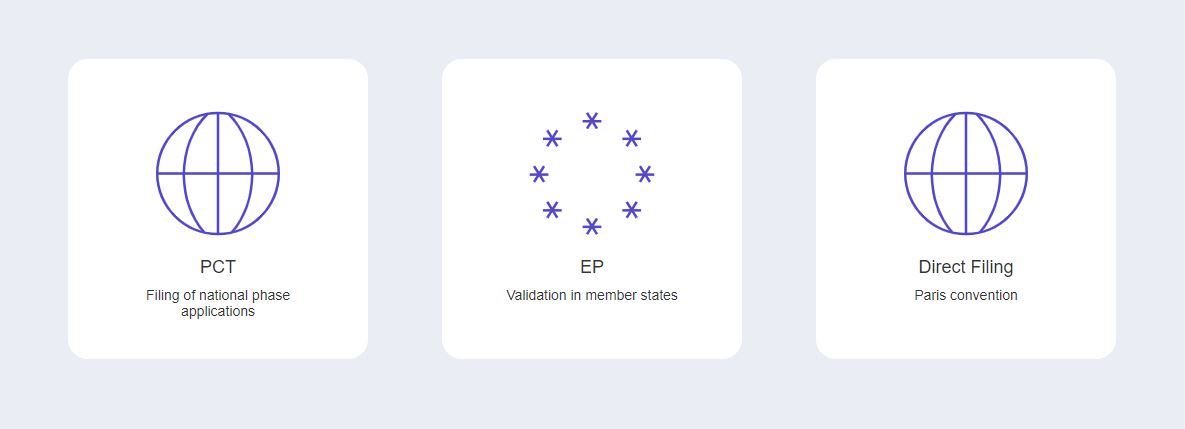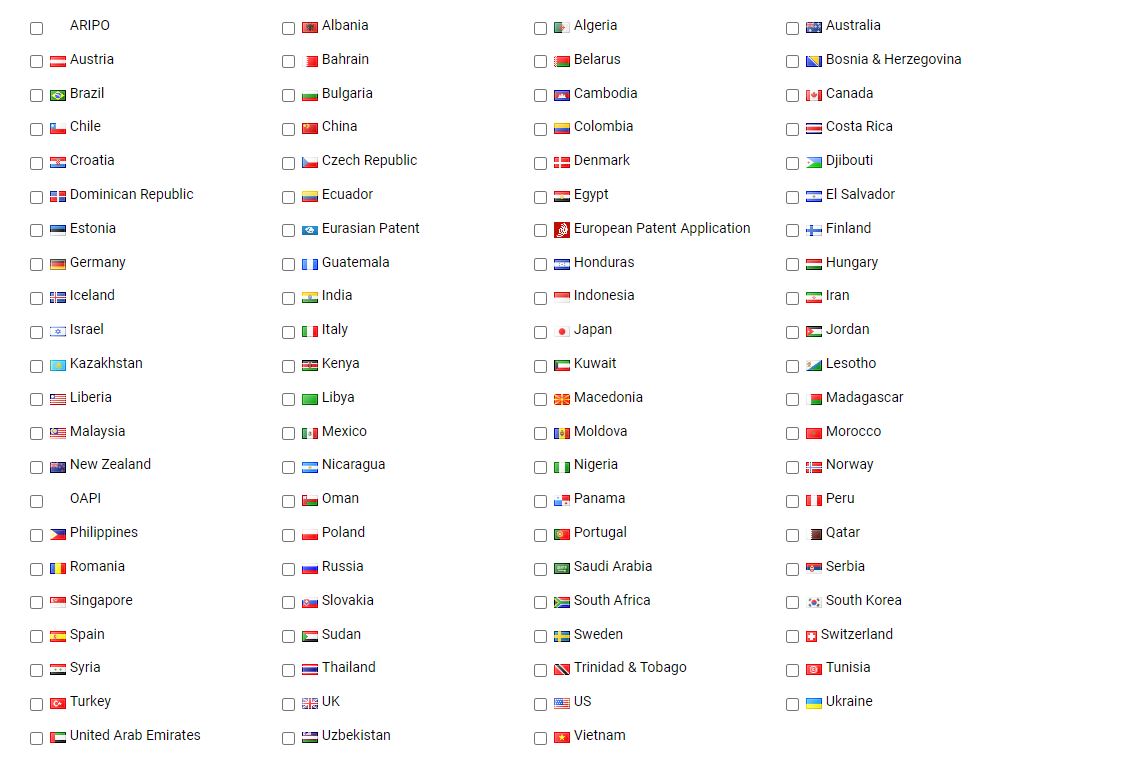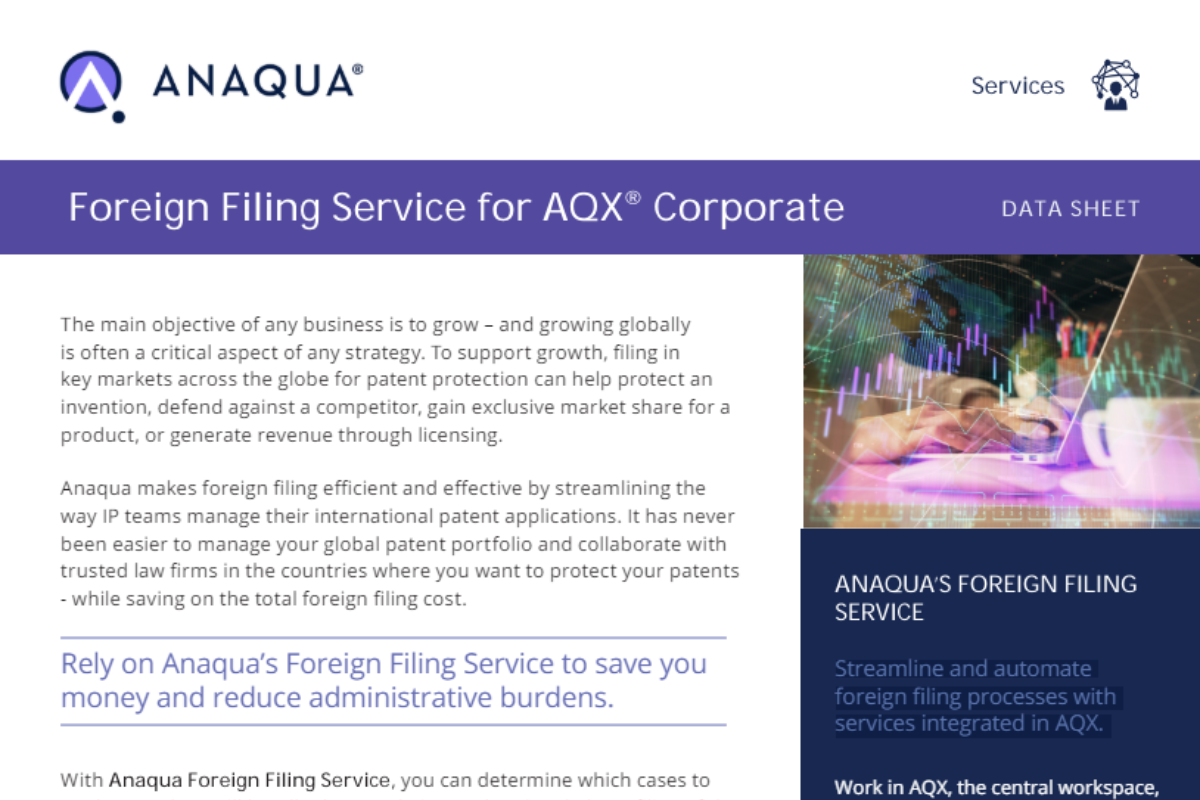Are you looking to improve your international patent filing processes? Learn more about key foreign filing challenges, and how to streamline foreign filing processes to free up your team to focus on higher-level activities for your organization.
Efficiency, clarity, and predictability are not words frequently associated with international patent filing programs.
More commonly, the process is hindered by exchanging multiple emails with local associates in multiple time zones, uploading documents specific to each country, and attempting to determine a realistic estimate of costs and fees. Most legal departments are seeing workloads increase as they bring more work in-house.
As reported in the EY Report General Counsel Imperative Series 2021, 76% of law departments find it challenging to manage current workloads (p.11).
The Complexities of Managing International Patent Filings

Time-Consuming Foreign Filing Processes and Decisions
From deciding where to file to preparing the documents each country’s intellectual property office requires, foreign filing can consume significant hours for everyone on the IP team. For every new patent, IP teams need to determine in which jurisdictions to file and which filing application approach to follow. This decision-making process involves balancing cost flow goals and your commercial strategy for every invention.
While, as the name implies, direct filing is country-by-country, leveraging vehicles such as the Patent Cooperation Treaty (PCT), European Patent (EP), and the Unitary Patent (UP) can help you effectively execute your foreign filing strategy. For example, the Patent Cooperation Treaty (PCT) covers most of the world and can help to streamline some of the filing tasks and enable IP teams to defer filing costs for 18 months.
Even though the Patent Cooperation Treaty (PCT) can reduce some filing tasks, it is still a time-consuming application process and requires a number of documents and other associated information to be considered complete. IP teams need to manage the related docketing and communication after applications have been submitted. Once you’ve filed the international patent application, your IP team needs to track all the office actions across different countries. With all the manual entry associated with foreign filing, it is easy for teams to make an error which in the long run could put a patent or a key market for your organization at risk.
Anaqua’s Alternative: Simple, Effective Foreign Filing
Anaqua takes many of the administrative tasks out of foreign filing, we reduce this burden and save your team time and resources.
The Anaqua Foreign Filing Portal is a centralized hub for foreign patent filings. From this single portal, users can simply select the countries where they want to file and Anaqua will access the records of the home country application, gather jurisdiction-specific information, manage translations, and transmit instructions to local associates. After receiving confirmation of the filing from Anaqua, you can hand over the prosecution to your chosen agent. The agent will correspond with you directly for the resolution of any office actions.
Complex International Patent Filing Costs
You’re probably familiar with this approach to international patent filing: You receive instructions to file foreign patent applications and contact a couple of known local firms in each country of interest to request a quote. The response is a rate sheet with a range of services that may or may not be applicable to your situation. While you might be able to figure out a rough estimate for the initial filing fees, the fee schedule doesn’t include what the final costs will be.
After a few emails back and forth with the managing agent requesting further information, you piece together what you hope will be an accurate estimate. Multiply that time spent by the number of countries where your company or client wants to file, and the result can be a logistical mess before you even get to submit a filing.
Anaqua’s Alternative: Clarity in Your International Filing Costs
Along with taking away many of the administrative tasks of foreign filing, the Anaqua Foreign Filing Portal also gives you a single, transparent fee estimate, in the currency of your choice.
“You just go in to find your case and tick off the countries. As you tick off the countries, the costs and fees are populated according to what is applicable in that jurisdiction,” says Anders Osa-Svanberg, the Senior Director, Head of Foreign Filing at Anaqua.
Anaqua extracts information from the record of the application about claims, drawings, and the number of pages – all of which factor in determining the total fees. With that information, we can provide quotes based on the fixed service fees we have negotiated with our established global network of attorneys, as well as provide official fees and any estimated translation costs.
Fear of the Unknown
Considering the hundreds of countries where patent applications can be filed, either through a filing system like the PCT or directly in-country, it’s impractical for a law firm or corporate IP department to maintain ongoing relationships with patent agents, translators, and other service providers necessary to file an application everywhere it’s required.
Often, the decision on finding foreign associates in a new region is made in the rush of filing deadlines, across time zones, with little time or context to review the local counsel entrusted with the company’s valuable patent filings.

Anaqua’s Alternative: Reliability
Anaqua works with a worldwide team of agents. We have developed relationships with each local agent and continually audit the quality of their work. Because we ensure the quality of the agents in each country, you can trust that your foreign filing is in expert hands. Further, our secure software ensures an added element of safety for the sensitive documents uploaded and transmitted to local associates.
If you already have trusted foreign associates, you can continue to work with them. Your established local counsel can also receive documents and instructions through our centralized portal, just like any of our vetted network of associates. This flexibility is particularly important for law firms with strong ties and reciprocity relationships with international counterparts.
Anaqua’s team includes dedicated IP administrators who check your filing, for an added layer of reliability. Additionally, our processes are ISO 9001 certified.
“Computers are great at many things but sometimes you also want to have an extra layer of verification and with Anaqua’s team you have that support,” says Anders Osa-Svanberg.
The Result: Foreign Filing Made Easy.
Anaqua helps your team monitor your foreign filing portfolio. You can maintain a consolidated view of patents, their stages, and approaching deadlines.
Throughout the filing process, you can access real-time filing status information on the Anaqua Foreign Filing Portal. Rather than reviewing each reporting letter from local counsel and manually entering application information, your IP team will be able to locate all foreign filing cases directly in the Anaqua portal. Your foreign filing cases will automatically be pulled into the database for each application.
With increased automation, the roles of paralegals and other IP professionals are evolving and moving from low-value, routine tasks to more substantive work. Whereas previous days could be consumed by administrative tasks like scanning and sending documents to foreign associates, you can now add value to the IP team by providing insight into the strategy of the patent portfolio and reducing the overall patent filing costs to the business.
Are these challenges of foreign patent filing all too familiar to you?
Learn how you can reduce your costs by 25-45% and simplify the entire foreign patent filing process.




